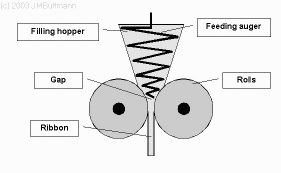- Home
- Blog
- News
- Basics
- Sources
- Agencies, Regulatory & Organisations
- CERSI Excipients Browser
- Excipient Report
- Excipient DMF List
- EXCiPACT Certified Companies
- Excipient Documentation
- Excipient EINECS Numbers
- Excipient E-Numbers
- FDA Inactive Ingredient List
- FDA GRAS Substances (SCOGS) Database
- IPEC Americas
- USP - U.S. Pharmacopeia
- Definitions
- Whitepapers / Publications
- Supplier
- Services
- Media
- Events
- 1st pharmaexcipients Poster Award
- Event Calendar
- Events featured by pharma-excipients
- 4th Annual Formulation & Drug Delivery Congress
- DDF Summit
- ExcipientFest Americas
- ExcipientFest Asia
- Global CompliancePanel
- International Conference and Exhibition on Pharmaceutics & Novel Drug Delivery Systems
- Formulation & Drug Delivery USA Congress
- Laboratory Medicine 2018
- Making Pharmaceuticals Europe
- Making Pharmaceuticals Exhibition
- Pharma Integrates
- PharmaExcipients China @CPhI China
- TTC Technology Training Center
- Jobs
- Online Sourcing
- Contact
02. October 2018
The production of 3D-printed drugs holds promise for future personalized medicine. Here, we prepared tablets containing naftopidil as a model drug using a semi-solid extrusion-type 3D bioprinter applicable for tissue engineering. A hydrogel is typically used as the printer ink for 3D bioprinters, and we incorporated various amounts of hydroxypropyl methylcellulose hydrogel (30%, 40% and 50% gel) into the printer ink. The resulting 3D-printed gel product was dried to obtain tablets. The...
13. September 2018
Herein we introduce an innovative process for preparation of directly compressible API and excipient agglomerates for extended release formulation of a highly water soluble drug, demonstrated with metformin HCl. Metformin is poorly compressible and currently employs wet granulation for tablet manufacturing, resulting in long cycle times. We have co-processed metformin HCl with hydroxypropyl methylcellulose (HPMC) and sodium carboxymethlycellulose (NaCMC) in solvent medium to generate...
22. August 2018
The effects of excipients on the accuracy of tablet subdivision are severely underinvestigated. In this study, placebo tablets were prepared using a combined mixture design of fillers and binders to evaluate the effect of these excipients on subdivision accuracy. The responses assessed were mass loss, mass variation, tablet fragmentation, and increased friability. Dicalcium phosphate dihydrate (DCP) gave rise to more uniform and denser tablets than microcrystalline cellulose (MCC), thus...
30. July 2018
Three-dimensional printing is one of the fastest developing technology withinpharmaceutical field. With many advantages this method can be found as a new dosageform manufacturing technique, however low printing efficiency stays as one of the major limitations. Therefore, the preparation of filaments as a feedstock and printing of the final dosageforms in pharmacies may by the direction of development for this method. Thus, simple dosage and dissolution profile modification seems to be...
17. July 2018
By the advent of continuous pharmaceutical manufacturing, fast and accurate characterization of product quality has become of a major interest. Although it also promotes the real-time release testing approach, so far mainly content uniformity studies were performed by near-infrared (NIR) spectroscopy. This paper proposes the simultaneous application of NIR and Raman spectroscopy to nondestructively analyze the critical quality attributes of continuously produced tablets in a real-time release...
04. July 2018
Global trade means that extra effort is required to protect one's products from the manufacturing line through distribution to the point of sale. In particular, it is not enough to track and trace packaged products throughthe supply chain using printed unique product identifiers and serialization systems, because new serialization requirements in many countries also require proof that the contents of the packages are actually genuine (authentic) and can be authenticated easily. This leaves...
24. June 2018
Co-processed excipients may enhance functionality and reduce drawbacks of traditional excipients for the manufacture of tablets on a commercial scale. The following study aimed to characterise a range of co-processed excipients that may prove suitable for dispersible tablet formulations prepared by direct compression. Co-processed excipients were lubricated and compressed into 10.5-mm convex tablets using a Phoenix compaction simulator. Compression profiles were generated by varying the...
07. June 2018
Asthma is a chronic respiratory condition characterized by attacks of spasm in the bronchi of the lungs, causing difficulty in breathing. Oral and inhalation routes are generally used for the treatment of asthma. Terbutaline sulfate (TBS), is a widely used bronchodilator for the treatment of asthma, is available in formulations in the market. However, there is no commercially available orally disintegrating tablets (ODTs) containing TBS. Therefore, this study was aimed to develop and...
04. May 2018
This study explores the methodology advised by healthcare professionals and the methods used by parents/carers to identify whether there is a best practice method for manipulation of 10 mg hydrocortisone tablets to provide an accurate dose to children. Bespoke surveys were used to identify methods recommended and used in manipulation of tablets. Hydrocortisone tablets were manipulated to provide a specified dose by both naïve participants and parents/carers. The accuracy of manipulation was...
30. April 2018
Metformin has a poor tabletability and flowability. Therefore, metformin is typically wet granulated with a binder before tableting. To save production costs, it would be desirable to implement a roll compaction/dry granulation (RCDG) process for metformin instead of using wet granulation. In order to implement RCDG, the efficiency of dry binders is crucial to ensure a high drug load and suitable properties of dry granules and tablets. This study evaluates dry granules manufactured by RCDG and...










